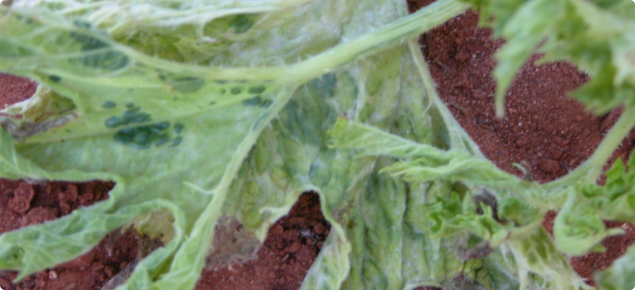Below is an excerpt from the application's project summary.
"Cucurbit crops have a $75m annual value in Western Australia (WA). Cucumber green mottle mosaic virus (CGMMV) arrived in Australia in 2014 devastating Northern Territory (NT) melon crops, while the Ord River Irrigation Area (ORIA) is the only place in Australia virulent Zucchini Yellow Mosaic Virus (ZYMV) has reached. Recently, virulent ZYMV epidemics have become so severe they threaten ORIA cucurbit industry viability, so the threat of CGMMV arriving from NT has caused great concern. We will address two virus incursions threatening the WA cucurbit industry: contact-transmitted Cucumber green mottle mosaic virus (CGMMV) and virulent south-east Asian strain of aphid-transmitted Zucchini Yellow Mosaic Virus (ZYMV).
Objectives: focus on filling critical information gaps in: (i) understanding how CGMMV survives and spreads, and virulent ZYMV (and its aphid vectors), survive and spread in the ORIA; (ii) developing biosecurity procedures to prevent CGMMV reaching WA and virulent ZYMV spreading further, tackle any incursions of increase effectiveness of ORIA virulent ZYMV control measures.
Outputs include: (i) comprehensive, biosecurity protocols to avoid introducing either pathogen to new regions, and contain and manage outbreaks in new regions; (ii) a low-cost, rapid CGMMV detection procedure for diagnostic laboratories; (iii) an improved ORIA virulent ZYMV management package; and (iv) an effective project extension program.
Outcomes for WA include: solutions to GGMMV and virulent ZYMV biosecurity threats protect cucurbit industry; domestic and export markets for cucurbits safeguarded; ORIA cucurbit industry recovers and expands; cucurbit industry overall profitability increases; cucurbit industry grows and exports increase; biosecurity partnerships and collaborations enhanced.
Beneficiaries in WA: ORIA and other cucurbit growers; cucurbit seed and seedling producers, wholesalers, retailers and exporters; transporters; agro-chemical industry; rural communities; and state tax revenues."
This research project is being managed by DAFWA.

